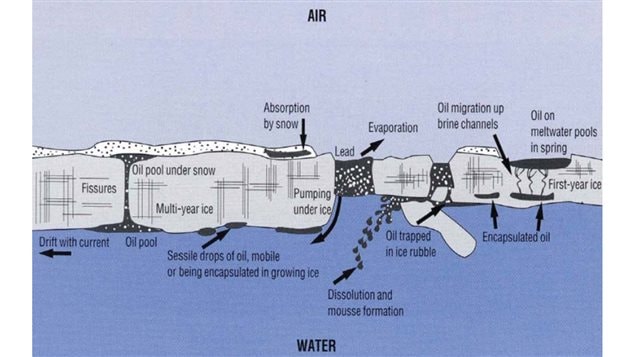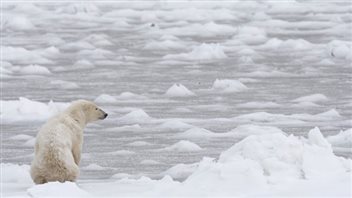A new report suggests little is known how an oil spill in the Arctic would act or spread in icy and snowy conditions.
The report also says, little is known on how to go about cleaning up such a spill in Arctic conditions.
Arctic residents are concerned about about the recent approval for seismic testing and potential oil and gas development off the coast of Baffin Bay and Davis Strait and what would happen to fish and sea animals they rely upon for food in the event of a spill. In addition, reduced sea ice means more large vessel, tourist and potential commercial shipping traffic could be travelling through the often hazardous waters.
For that reason the Northern Planning Commission (NPC) requested the study called, “Oil Spill Detection and Modeling Report in the Hudson and Davis Straits.”
The report says that several new technologies have been developed to detect and monitor oil spills. However, it says these are for open water spills and that little research has been done anywhere in the world regarding oil spills in marine environments where sea-ice and snow are present. It goes on to say that what little research has been done, over-simplifies the problem.

The report indicated that how an oil spill reacts would depend greatly on conditions at the time. For example, it said that in the case of a fall or winter spill, the report suggested any company responsible for a spill would likely have to wait until the sea ice melted before they could attempt to clean up the region, but that during that time, an oil slick could potentially travel hundreds of kilometres and kill countless sea mammals.

The report says that if oil and gas exploration proceeds, communities should be prepared to react right away and have people trained in oil spill awareness. They should also build local capacity to deal with any spill.
It adds, “In order to facilitate effective shoreline cleanup in the event of a spill, the Hudson and Davis Straits should be mapped to identify environmentally sensitive shoreline areas, as defined by Environment Canada criteria, traditional knowledge and community importance”.
The report says a central contact should be available with the government of Nunavut for coordination of spill reaction throughout the territory along with establishing interactions with other levels of government.
Oil Spill Detection and Modeling Report in the Hudson and Davis Straits was prepared by a research firm called LookNorth in St. John’s, Nfld.







For reasons beyond our control, and for an undetermined period of time, our comment section is now closed. However, our social networks remain open to your contributions.